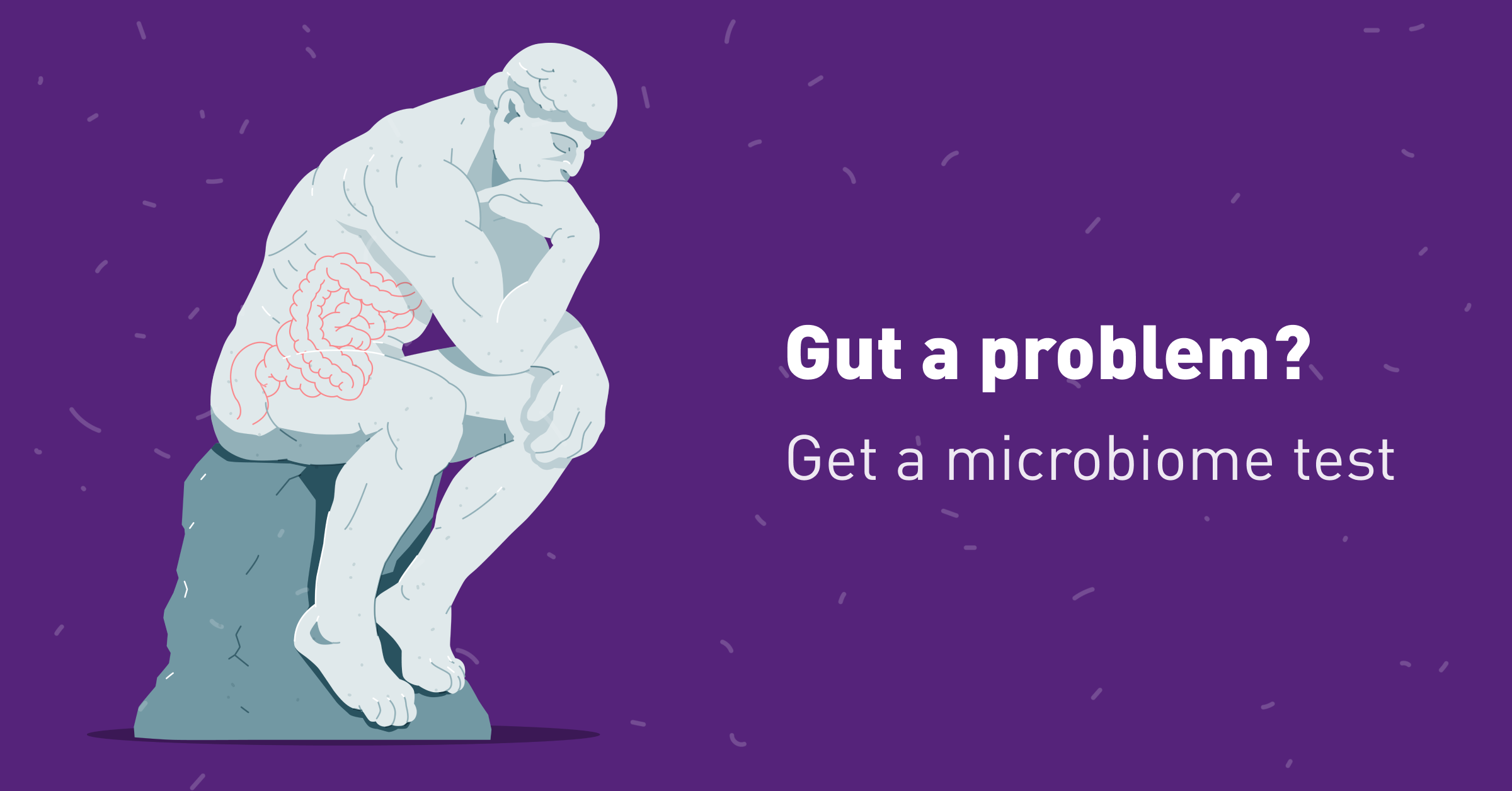Blue Zones are areas across the globe marked by low disease rates and extreme longevity. Find out the dietary and lifestyle habits common in these regions, including how they might aid extreme longevity.
- What are Blue Zones?
- The Blue Zone diet
- Microbiome and extreme longevity
- Longevity is a way of life
- Final word
What are Blue Zones?
The idea of "Blue Zones" grew out of demographic studies published in the Journal of Experimental Gerontology. It all began when Gianni Pes and Michel Poulain identified Sardinia as having the highest concentrations of male centenarians, something they marked with concentric blue circles on a map.
Inspired by this finding, National Geographic journalist Dan Buettner assembled a team and began looking for other "Blue Zones". Collectively, he and his team have identified five Blue Zones around the world, including:
- Barbagia region of Sardinia
- Ikaria, Greece
- Nicoya Peninsula, Costa Rica
- Loma Linda, California
- Okinawa, Japan
Each zone boasts a unique health-related accolade. For example, Okinawa contains the highest proportion of female centenarians, Nicoyan’s are twice as likely to reach ninety than Americans and Ikarians are half as likely to develop heart disease.
Based on interviews with the residents, Buettner and his team have reverse-engineered lifestyle and dietary tips, creating a bestselling book and a website. He has also launched the Blue Zone project, a program that aims to import lifestyle lessons from long-living peoples into American cities.
The Blue Zone Diet

As you would expect, Okinawa residents eat different foods from those in Lake Loma, mainly due to geographical and cultural differences. As such, there is no such thing as a “blue zone diet” per se, in the sense of specific food recommendations.
Nonetheless, the Blue Zone website has created a list of food guidelines. Let’s take a closer look at the dietary habits of the world’s longest-living people:
Plant slant
As a result of their high plant consumption, the Blue Zone diets are packed full of both fibre and prebiotics. Not only do prebiotics encourage microbiome diversity, a marker of gut health, but they also fuel the production of butyrate, an essential short-chain fatty acid. By doing so, they can reduce inflammation and reinforce the gut wall.
Reduced meat consumption
Though four out of five Blue Zone regions consume poultry, they do so very sparingly. In general, locals eat 2oz of meat around five times a month. On special occasions, they may slaughter an animal and feast, though this is the exception and not the rule.
Moreover, in most Blue Zones, residents eat a modest amount of fish, averaging at around 3oz three times a week. It is thought that grazing enriches the omega-3 content in Ikarian and Sardinian pigs, increasing the nutritiousness of poultry.

Whole-grains over refined grains
Blue Zone residents consume whole-grain and sourdough bread in favour of refined, processed alternatives, likely offering protective effects against disease risk.
For example, evidence suggests that whole grains can protect against heart disease and all-cause mortality.
Likewise, there is mounting evidence that the sourdough fermentation process can increase the digestibility and nutritiousness of bread.
In one study, the lactic acid found in sourdough bread was shown to break down the phytic acid content by as much as 70% of its original levels. This process means that important minerals and nutrients are made bioavailable, making the bread more nutritious.
Not only can this keep you feeling fuller for longer, but it also prevents blood sugar spikes. Over time, blood sugar spikes may increase your risk of type 2 diabetes.
Limited dairy intake and fermented yoghurt
In areas where the residents do drink milk, such as Sardinia and Ikaria, locals often ferment the dairy product before consumption. Moreover, instead of drinking cow’s milk, they often consume goat or sheep’s milk.
Whether or not goats milk is healthier than sheep’s milk is up for debate, though the fermentation process likely enriches the gut microbiome of Blue Zone residents.
Microbiome and extreme longevity

In light of their diets, it is fair to assume that the individuals living in Blue Zones would generally have higher microbiome diversity, associated with improved health outcomes and reduced disease risk.
Though the evidence is scarce, there is one study which may support a relationship between the microbiome and extreme longevity.
Researchers in East China sequenced the microbiome of three groups, consisting of those aged 65-70, 90-99 and 100+. In total, the subjects numbered 186, a reasonably small study.
Amazingly, the gut microbiota of those 90-99 and 100+ had higher diversity, robustness, and richness compared with the 65–70 year age group. Generally, you would expect diversity to diminish with age, suggesting the microbiome may have a role in extreme longevity.
Longevity is a way of life
Besides dietary patterns, the Blue zone project also lists lifestyle habits shared by the longest-living people. Without further ado, let's dive in and take a look:
Get moving

Whilst Blue Zone residents don’t pump iron daily or run marathons, exercise and movement are built into their lifestyle. In particular, residents garden, walk to work, cycle and farm, often doing so well into old age.
On the island of Sardinia, many of the men live pastoral lives, whilst in Ikaria, it is not uncommon for 80-year-olds to pilot fishing boats. These jobs are strenuous and translate to more steps throughout the day and a raised heart rate.
In one study, researchers compared the nutrition and lifestyle of two separate male populations on a Sardinian island, one with a higher level of population longevity and the other with a lower level.
Whilst the researchers found little difference in their diets, the male population with greater longevity rates had significantly higher levels of pastoralism and physical activity.
There is a robust body of evidence noting the health benefits of exercise and the health risks of a sedentary lifestyle. In a study looking at over 600,000 individuals, those who did 150 minutes of moderate-intensity exercise a week, compared to those who did none, had a 20% lower mortality rate.
In another study analysing the existing literature, researchers note that a sedentary lifestyle can increase all-cause mortality alongside cardiovascular disease risk.
In fact, the World Health Organisation has suggested that sedentary lifetsyle may be one of the top ten leading causes of death and disability in the world.
The list of adverse health effects for a sedentary lifetsyle are as long as the benefits of excercise: it can increase all causes of mortality, double the risk of cardiovascular diseases, diabetes, and raise your risk of developing colon cancer or high blood pressure.
Though many of us can’t just trade our laptops for cattle herding, we would all do well to incorporate movement into our day, whether through outside meetings or commuting on foot.
The importance of purpose

In Okinawa, locals speak of “Ikigai”, whilst in Nicoya, they call it “Plan De Vida”. Translated, this simply means “Why I get up in the morning”.
Across the Blue Zones, researchers note that the residents generally have a strong sense of purpose, even if different regions have separate names for it. It is theorised that this is a contributing factor to their extreme longevity.
In short, observational research has shown an association between higher life purpose and longevity. Generally, a life purpose is anything that gives meaning to your life and enriches each day, whether that be family, community, a career goal, or faith.
In a study looking at 7000 males over the age of 50, researchers found that those who scored highest on life purpose tests were less likely to die over four years.
Likewise, in a meta-analysis of over ten prospective studies, numbering 135,000 participants, researchers found a correlation between life-purpose and decreased all-cause mortality as well as cardiovascular disease.

Before we continue, it’s important to clarify that this doesn’t mean life purpose will make you live for four years longer. These tests are observational studies that found a correlation between the two factors, not causation.
On this point, the biggest criticism of the Blue Zone project is that they invariably imply that correlation equals causation. For example, the website states: “Knowing your sense of purpose is worth up to seven years of extra life expectancy”. Based on the evidence available, we can’t make this conclusion.
No man is an island

A common feature among Blue Zone groups is their strong social connections and close family ties. In particular, many residents have life partners, see wider family often and boast close friendships. In Okinawa, they even create “moias”, five close friends committed to each other for life.
There is a compelling body of research to suggest that strong social connections can benefit our health, all of which would support the observations of Blue Zone researchers.
In a widely-cited meta-analysis of 148 studies, researchers at Brigham Young University found that participants with stronger social relationships had a 50% increased chance of survival. The reduction in mortality risk was comparable with established risk factors such as BMI and exercise rates.
Parallel to this, loneliness seems to be a reliable predictor of adverse health outcomes; in one study looking at over 2000 American citizens aged 50+, loneliness was identified as a risk factor for morbidity and mortality.
Other studies have shown that loneliness can lead to reduced physical activity, impaired sleep and depressive symptoms, which can translate to health issues.
Get stress in check
Besides a strong sense of purpose, Blue Zone residents also have daily stress management techniques and set aside time for reflection. For example, Okinawa locals remember their ancestors, Sardinians have a “happy hour”, and seventh-day Adventists in Lake Loma pray.
Numerous studies have shown an association between chronic stress and adverse health outcomes, especially cardiovascular disease. For example, in a Swedish study of over 130,000 siblings, researchers discovered a “robust” correlation between stress-related disorders and increased heart disease risk.
Besides its physiological effects on the body, namely increased inflammation and changes to the gut microbiome, stress increases people’s exposure to health risk factors. For example, those experiencing chronic stress often self-medicate with alcohol or nicotine.
Faith healing

In many Blue Zone regions, residents belong to a religious community. Interestingly, faith has been associated with lower mortality rates and longevity in certain populations.
In one study among 75,000 female participants, frequent attendance at religious services was associated with a significantly lower risk of all-cause, cardiovascular, and cancer mortality among women.
The researchers put the correlation down to improved well-being and an increased sense of belonging. The Richard Dawkins of the world can't do much with this information, nor can doctors simply prescribe religion. Nonetheless, even those without faith can adopt practices from religious belief, including daily meditation and connection with a community.
Final word
Blue Zone residents live active lifestyles and have strong social connections with family and friends. Moreover, many of the inhabitants report a strong sense of life purpose and belonging.
This confluence of factors likely benefits the resident’s wellbeing, protecting against stress, loneliness and associated health disorders.
Blue Zone residents eat a wide variety of prebiotic vegetables, consuming an abundance of fibre and prebiotic greens. They supplement this with legumes, nuts, fruit and heart-healthy whole grains.
Moreover, fish plays a part in their diet, though not as much as you might assume; on average, residents eat 3oz of fish three times weekly, whilst poultry is consumed even more sparingly.
On the whole, the dietary patterns of the Blue Zone inhabitants mirror those promoted by public health guidelines, many of which take inspiration from the Mediterranean diet.
Research has shown that the Mediterranean diet may reduce our risk of developing various conditions, including type 2 diabetes, high blood pressure and high cholesterol, all of which raise your risk of heart disease.
Additionally, observational studies suggest that those who closely follow a Mediterranean diet may live a longer life, something the Blue Zone project supports.
☝️DISCLAIMER☝This article is for informational purposes only. It is not intended to constitute or be a substitute for professional medical advice, diagnosis, or treatment.


















